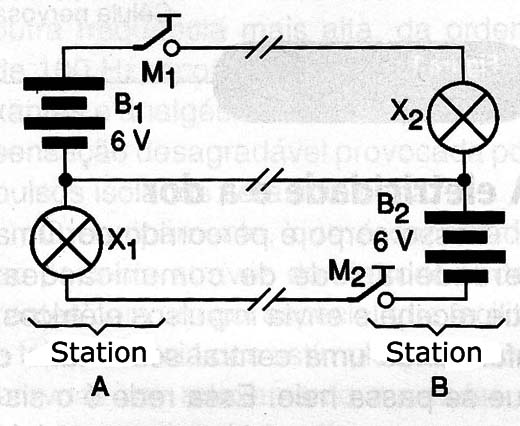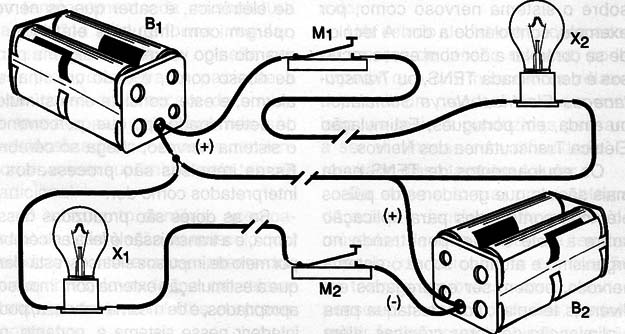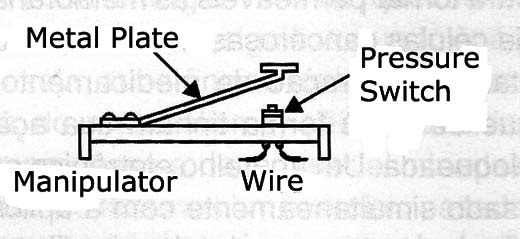Because of its simplicity, the experimental two-way telegraph described is ideal for a school project that addresses the old communication systems. The complete circuit, which uses only 6 components, is shown in Figure 1.

The circuit uses three-wire connection between two stations which allows an operation "full duplex", i.e., the two stations can send and receive signals at the same time.
The receivers are common lamps (or LEDs in series with 470 Ω x 1/8 W resistors) and the transmitter is a telegraphic key built with metal taps.
The complete assembly of the system is shown in Figure 2.

The telegraph keys can be assembled with metal or even improvised taps with push buttons, as shown in Figure 3.

To operate the system, remember that a short blink (soon hit in the key) corresponds to a dot and a longer wink to a dash (longer touch in the key).
Combining dots and dashes get the various symbols to be transmitted, as the Morse Code (Look for it on the Internet). To post a good training is necessary both in transmission and reception.
Just started training the individual letters and then go to words and complete messages.
M1, M2 – Telegraph keys - see text
B1, B2 - 4 1.5V small cells
L1, L2 - lamps 6 V x 50 mA
Miscellaneous:
Cells holder, wires, solder, etc.



